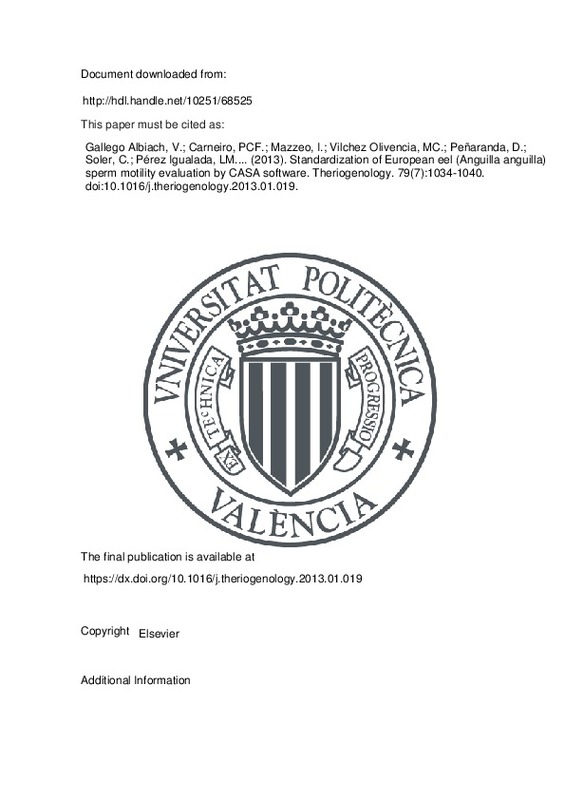JavaScript is disabled for your browser. Some features of this site may not work without it.
Buscar en RiuNet
Listar
Mi cuenta
Estadísticas
Ayuda RiuNet
Admin. UPV
Standardization of European eel (Anguilla anguilla) sperm motility evaluation by CASA software
Mostrar el registro completo del ítem
Gallego Albiach, V.; Carneiro, PCF.; Mazzeo, I.; Vilchez Olivencia, MC.; Peñaranda, D.; Soler, C.; Pérez Igualada, LM.... (2013). Standardization of European eel (Anguilla anguilla) sperm motility evaluation by CASA software. Theriogenology. 79(7):1034-1040. https://doi.org/10.1016/j.theriogenology.2013.01.019
Por favor, use este identificador para citar o enlazar este ítem: http://hdl.handle.net/10251/68525
Ficheros en el ítem
Metadatos del ítem
| Título: | Standardization of European eel (Anguilla anguilla) sperm motility evaluation by CASA software | |
| Autor: | Carneiro, P. C. F. Mazzeo, Ilaria Vilchez Olivencia, Maria Carmen Soler, C. | |
| Entidad UPV: |
|
|
| Fecha difusión: |
|
|
| Resumen: |
[EN] The development of powerful computer-assisted sperm analysis software has made kinetic studies of spermatozoa possible. This system has been used and validated for several species, but some technical questions have ...[+]
|
|
| Palabras clave: |
|
|
| Derechos de uso: | Reserva de todos los derechos | |
| Fuente: |
|
|
| DOI: |
|
|
| Editorial: |
|
|
| Versión del editor: | https://dx.doi.org/10.1016/j.theriogenology.2013.01.019 | |
| Código del Proyecto: |
|
|
| Agradecimientos: |
This study was funded from the European Community's 7th Framework Programme under the Theme 2 "Food, Agriculture and Fisheries, and Biotechnology," grant agreement 245257 (Pro-Eel), and Generalitat Valenciana (ACOMP/2011/229). ...[+]
|
|
| Tipo: |
|







![[Cerrado]](/themes/UPV/images/candado.png)


